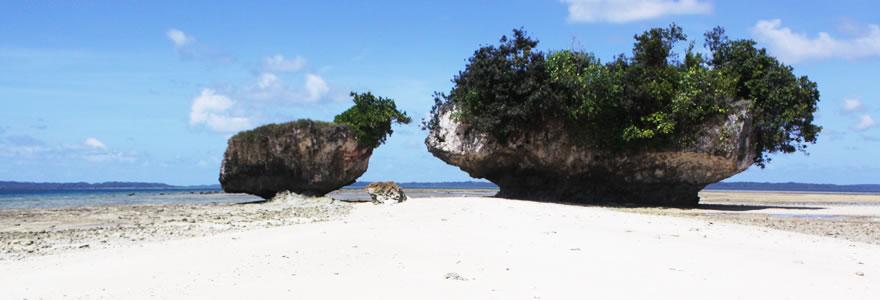
Bird Island
The province of Quezon, truly blessed with the bounties of nature, has many spectacular islands that have continued to attract thousands of visitors to its sparkling beaches every year. One group of islands in particular, Polillo, stands out for its incomparable natural gifts.
Polillo is an island in the Northeastern region of the Philippine archipelago. It is separated from the island of Luzon by the Polillo Strait.
The island itself is subdivided across three municipalities. The municipality of Polillo takes up the southern part of the island. The eastern part of the island is administered by the municipality of Burdeos, while the north is within the jurisdiction of the municipality of Panukulan. The island is also home to one of the rarest reptiles on the planet, the Butaan lizard, a highly endangered relative of the Komodo Dragon.
Polilio Islands consists of several islands with beautiful, fine beaches, a game refuge and bird sanctuary. Land area of the main island is six-hundred and five square meters. Shallow waters, with extensive mangrove forests surround the islands and coral reefs. In the underwater, you could see sea creatures such as, hammerheads, sharks, and whale sharks.
History
Trade relations between the natives of the Polillo Islands and Chinese merchants existed long before the Spanish conquerors came to the archipelago. Trade was a conglomeration of Malay-Hindu-Chinese-Tagalog.
Padre Morga wrote that Polillo originated from the Chinese word "Pulilu", which means beautiful island with plenty of food. When Juan de Salcedo, a Spanish conqueror came to Polillo in 1567, he saw a central government fully organized through the Balangay, with a datu who had a direct supervision and control over all the natives. The inhabitants lived in nipa huts.
In 1571 the Spaniards took hold of the islands of Pu Li Lu. Through the leadership of Padre Domingo, a Spanish friar, a chapel was built, where the old Spanish church was later constructed. After one and a half years, the people, through forced labor, built a concrete wall to protect the "pueblo" of Pu Li Lu from moro pirate invaders. Watchtowers called "castillos" were erected in the four corners of the pueblo.
The church was constructed in 1577. Boulders, gravel and sand were mixed with lime produced out of seashells and coral stones. Padre Domingo instigated the planting of sugar cane in San Isidro, San Antonio and San Francisco. Production of molasses was put into full swing.
Spanish conquistadores were assigned to the "pueblo" of Pu Li Lu to promote church construction. The church tower was constructed with priority, so that in 1587, in the early summer of May, two huge bronze bells rang atop. Due to language problems, Padre Domingo changed Pu Li Lu to Polillo.
Attractions
- Bird Island
It was a coral formation that became an island. The island is now a sanctuary for birds, which fly over the main island of Polillo and its neighboring areas. Every afternoon, groups of birds gather in the sky and head towards the island to spend the night there. Bird Island is located in Polillo Island, Quezon.
- Tamulaya falls
Tamulaya Falls is the centerpiece of tourist destinations in Polillo, literally because the tourism poster at the Munisipyo was laid out with the falls at the center. Being a centerpiece may well be justified as it is a popular destination both for locals and visitors. It could be noticed that the photo at the Munisipyo does not feature the dam yet. This dam was built on top of the falls for the general benefit of the public as it is the source of domestic water supply of the town. The water pressure generated by the elevation of the falls can supply even three-storey buildings.
- Balesin Island Resort
You could stay and visit the beautiful resorts in the Polillio Island. One of them is the Balesin Island Resort.
Balesin has a four-hundred and twenty-four hectare total land area. It is approximately five kilometers long and one-and-a-half kilometers at its widest point.
The island is generally flat except for some elevated areas, which reach up to six meters above sea level.
- Polillo Coral Reef
Polillo’s coral reefs are characterized by fringing reefs around the islands with underwater coral islands just below the surface in many places. During low tide, the extensive reef flats become exposed.
The coral reefs drop down to about fourteen meters in most places, after which it changes into a sandy bottom with coral patches.
Many of the species found are adapted to murky waters such as Soapfish (Diplorion bifasciatum) and Sand Bass (Psammoperca waigiensis).
- Minasawa Bird Sanctuary
Minasawa island is just off the town of Jomalig but still part of Burdeos. The 4.5-hectare island was established as a sanctuary by the Department of Environment and Natural Resources to protect the bird population in the area. At present, there are about five species of birds, which are found in the island; the Nutmeg Imperial Pigeon (600), Black Naped Oriole (600), Rufus Night Heron (thousands), Amusling (thousand), and Swifts (50).
How to get here
From the official website of Polillo Quezon
To get to Polillo, go first to Ungos Port in Real, Quezon. A local bus company plies the Lucena-Infanta route originating from Lucena Grand Terminal at one-and-a-half hour intervals with the first trip at 4:00AM. Two other bus companies have trips to Infanta originating from Metro Manila. One of them has its terminal in Legarda, Manila. These buses get through the Famy-Real-Infanta Road. Famy is at the junction with the Rizal-Laguna Road.
There are two regular boat trips from Real to Polillo. The first trip usually leaves at 7:30AM as the bus passengers coming from Lucena and Manila try to catch it up. The next boat leaves at 10:00AM. The boats are outrigger types powered with a surplus truck engine. The return trips from Polillo are at 5:00AM and 1:00PM.










